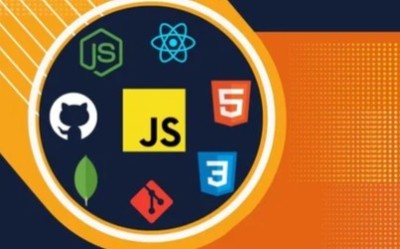Course description
Highlights:
- Introduction to AI: Understand the fundamentals of artificial intelligence and its impact on
industries.
- Machine Learning (ML): Learn how to build and implement machine learning models for prediction, classification, and regression tasks. - Neural Networks and Deep Learning: Dive into neural networks, deep learning algorithms, andhowthey replicate human brain functionality. - Natural Language Processing (NLP): Learn how AI understands, processes, and generates humanlanguage. - Computer Vision: Explore how AI can interpret and process visual information fromthe world. - AI Ethics and Future Trends: Understand the ethical implications of AI and explore its future invarious industries
Course Objective:
By the end of this course, you will be able to: - Understand the basic concepts and technologies behind artificial intelligence. - Build and deploy machine learning models using different algorithms. - Work with neural networks and deep learning frameworks like TensorFlow and Keras. - Apply natural language processing (NLP) techniques to analyze and generate text. - Develop computer vision applications that interpret images and videos. - Understand and address the ethical implications of AI technology. - Build AI-powered applications to solve real-world problems.
Course Structure:
1. Introduction to AI - What is Artificial Intelligence and why is it important in today’s world?
- History and evolution of AI technologies. - AI vs Machine Learning vs Deep Learning: Understanding the differences. - Key applications of AI across various industries (healthcare, finance, gaming, etc.).
- Tools and frameworks in AI: Python, TensorFlow, Keras, OpenAI, and more
2. Machine Learning Basics
- Introduction to machine learning: Supervised, unsupervised, and reinforcement learning. - Building machine learning models: Regression, classification, and clustering. - Evaluating models using metrics such as accuracy, precision, recall, and F1-score. - Implementing popular algorithms: Linear regression, decision trees, k-nearest neighbors (KNN), and random forests. - Practical exercises using libraries like Scikit-learn and Pandas.
3. Deep Learning and Neural Networks
- Introduction to neural networks: Structure and components. - How deep learning works: Layers, neurons, activation functions, and backpropagation. - Building a simple neural network from scratch. - Using deep learning frameworks like TensorFlow and Keras. - Convolutional Neural Networks (CNN) for image processing. - Recurrent Neural Networks (RNN) and Long Short-Term Memory (LSTM) for sequential data
4. Natural Language Processing (NLP) - What is Natural Language Processing (NLP) and its role in AI?
- Text pre-processing: Tokenization, stemming, and lemmatization. - Text representation techniques: Bag of Words, TF-IDF, word embeddings (Word2Vec, GloVe). - Building NLP models for text classification and sentiment analysis. - Language generation models: GPT-3, BERT, and Transformer-based models. - Applications of NLP in chatbots, language translation, and speech recognition
5. Computer Vision
- Introduction to computer vision and its applications in AI. - Image pre-processing techniques: Resizing, normalization, and augmentation. - Convolutional Neural Networks (CNN) for image classification and object detection. - Transfer learning and pre-trained models for vision tasks. - Real-time image processing: OpenCV and applications in face recognition, medical imaging, andautonomous vehicles.
6. AI in Practice
- Building an AI-powered application: From concept to deployment. - Integrating machine learning models into production systems. - AI tools for automation and optimization. - Working with AI in cloud environments using AWS, Google Cloud, and Azure. - Ethical AI: Bias, fairness, transparency, and accountability in AI systems. - Legal and societal implications of AI technologies.
7. AI Ethics and Future Trends
- Understanding the ethical challenges in AI: Privacy, security, and bias. - The role of AI in decision-making and its potential for misuse. - Ensuring transparency and fairness in AI algorithms. - AI in society: Impact on jobs, privacy, and security. - The future of AI: Emerging trends, challenges, and opportunities in AI technologies
8. Capstone Project and Real-World Applications
- End-to-end AI project: From problem identification to model deployment. - Applying machine learning and deep learning to solve real-world challenges. - Building AI models for business, healthcare, finance, or other industries. - Presenting the AI project and showcasing insights to stakeholders. - Portfolio development: How to build a strong AI portfolio for job applications.
Learning Methodology:
- Interactive Lessons: Learn through theoretical explanations, hands-on tutorials, coding examples, and case studies. - Practical Projects: Apply your skills in real-world AI projects, from training models to deployingAI- powered applications. - Assessments and Quizzes: Reinforce learning through quizzes, assignments, and real-world
problem-solving scenarios. - Live Sessions: Participate in live Q&A sessions, discuss ideas, and clarify doubts with instructors. - Discussion Forums: Collaborate with peers, share ideas, ask questions, and learn together incommunity forums.
Who Should Enroll:
- Beginners who are interested in starting a career in artificial intelligence. - Programmers and developers looking to gain proficiency in AI techniques and frameworks. - Data scientists or machine learning engineers wanting to expand their knowledge into deeplearning and AI. - Business professionals and entrepreneurs interested in understanding AI applications for business
growth. - Students or professionals in fields like computer science, data science, or robotics who want tospecialize in AI. This Artificial Intelligence (AI) course will equip you with the knowledge and skills to build intelligent
systems, create machine learning models, and understand the vast potential of AI. Whether you
want to start a career in AI or advance your existing skill set, this course provides the tools tosucceedand innovate in one of the most exciting fields of technology














